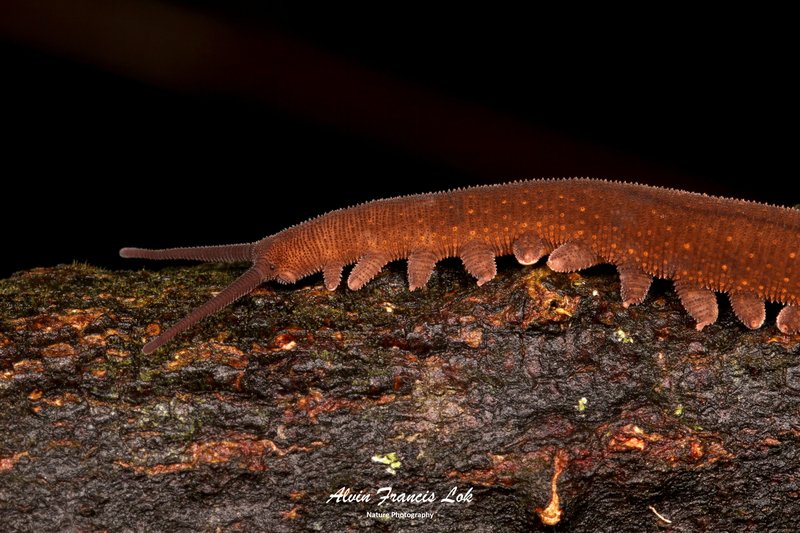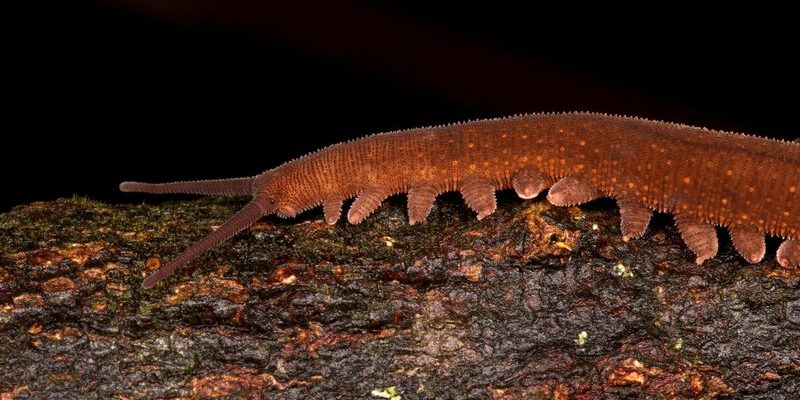
Imagine velvet worms as nature’s hidden gems. With their smooth, velvety appearance and unique hunting strategies, they remind us that not all important species come wrapped in flashy colors or dramatic behaviors. Instead, they play crucial roles in their habitats, much like tiny ecosystem engineers quietly going about their business. So, what exactly makes velvet worms so special? Let’s explore their ecological significance and why we need to pay attention to them.
The Unique Biology of Velvet Worms
Velvet worms, or *Onychophora*, are ancient creatures that have been around for over 500 million years. They’re often compared to both arthropods and annelids, which makes their biology intriguingly unique. With over 200 species, these critters can be found in moist, leafy forests around the world.
One cool thing about velvet worms is their soft, segmented bodies and tiny legs. They have about 13 to 43 pairs of stubby legs that allow them to move gracefully through their damp environments. Their skin is covered in a layer of slime, which serves as a protection mechanism and helps them navigate their habitats. These features give them a look that’s both charming and slightly odd—kind of like a creature from a fantasy novel.
Here’s the thing: velvet worms don’t just look interesting; they also have a unique method of hunting. They use their ability to secrete a sticky slime to trap prey, usually small insects. This slime works like a trap, giving velvet worms enough time to catch their dinner. This hunting strategy showcases their evolutionary adaptations and highlights their role as predators in their ecosystems.
Velvet Worms and Ecological Balance
Every creature plays a role in maintaining ecological balance, and velvet worms are no exception. As predators, they help control populations of insects and other small arthropods. Without these natural checks, certain species could overpopulate, leading to imbalances that affect plant life and other organisms.
Consider this: if velvet worms disappear from their habitats, what happens? The insect populations they prey on could explode, resulting in overgrazing of plants and disruptions in the entire food web. This domino effect stresses the importance of every species, no matter how small or unassuming.
Furthermore, velvet worms contribute to nutrient cycling in their ecosystems. As they feed and eventually decompose, their bodies return essential nutrients to the soil. This nutrient replenishment supports plant growth, making velvet worms key players in keeping ecosystems healthy and thriving.
Threats to Velvet Worm Populations
Sadly, velvet worms face several threats that endanger their populations. Habitat destruction, climate change, and pollution are among the top challenges they encounter. As forests are cleared for agriculture or urban development, these creatures lose their homes.
Moreover, because velvet worms require specific moisture levels to survive, climate change poses a significant risk. Rising temperatures and altered rainfall patterns can make their habitats less suitable. As their environments change, these creatures find it harder to thrive, impacting their populations and the ecosystems that depend on them.
The irony is that the more we encroach on their habitats, the more we risk losing these unique creatures and the biodiversity they support. It’s a stark reminder of how interconnected our existence is with every being, no matter how small.
The Role of Velvet Worms in Scientific Research
Velvet worms aren’t just important for ecology; they also play a significant role in scientific research. Scientists study them not only to understand their unique adaptations but also to glean insights into evolutionary biology. Their ancient lineage provides a glimpse into what life on Earth looked like hundreds of millions of years ago.
Research on velvet worms might even lead to breakthroughs in biotechnology and medicine. For instance, the slime they produce has unique properties that may inspire new materials or applications in medical science. Who knew that something so small could hold such potential?
Studying velvet worms also highlights the importance of preserving biodiversity. By understanding how these creatures interact with their ecosystems, we gain insights into broader environmental processes and the importance of conservation efforts.
Conservation Efforts for Velvet Worms
Conserving velvet worms may not seem like a priority, but it should be. Various organizations and researchers are working to study and protect their habitats. Efforts include habitat restoration, raising awareness about the importance of these creatures, and promoting sustainable practices in areas where they thrive.
Community engagement is also vital. Local populations can help monitor and protect velvet worm habitats, ensuring that these creatures continue to flourish. Education initiatives that inform people about the significance of biodiversity can help shift perspectives and promote conservation efforts.
The more understanding we cultivate about velvet worms and their roles in ecosystems, the better equipped we are to protect them. After all, every creature has its place, and preserving that balance is crucial for the planet’s health.
Why Velvet Worms Matter to You and Me
You might be wondering why you should care about velvet worms, especially if you’ve never seen one. Well, think of it like this: every time we lose a species, we lose a part of our planet’s story. Velvet worms may not be as popular as pandas or tigers, but they contribute to the intricate tapestry of life on Earth.
By protecting velvet worms and their habitats, we’re contributing to a healthier environment for ourselves. Biodiversity supports ecosystem services that benefit human populations, like clean air, water, and food. When these ecosystems thrive, so do we.
Let’s not forget the joy of discovering unique creatures. Nature thrives on its variety, and each little organism has its charm and importance. The velvet worm, with its quirky appearance and fascinating biology, is just one example of the wonders our planet holds.
In conclusion, velvet worms might not be household names, but they play a crucial role in biodiversity. Their unique biology, ecological functions, and contributions to scientific research remind us that every creature, no matter how small, matters in the grand scheme of life on Earth. As we move forward, let’s embrace the responsibility of protecting these hidden gems and the beautiful ecosystems they represent.

